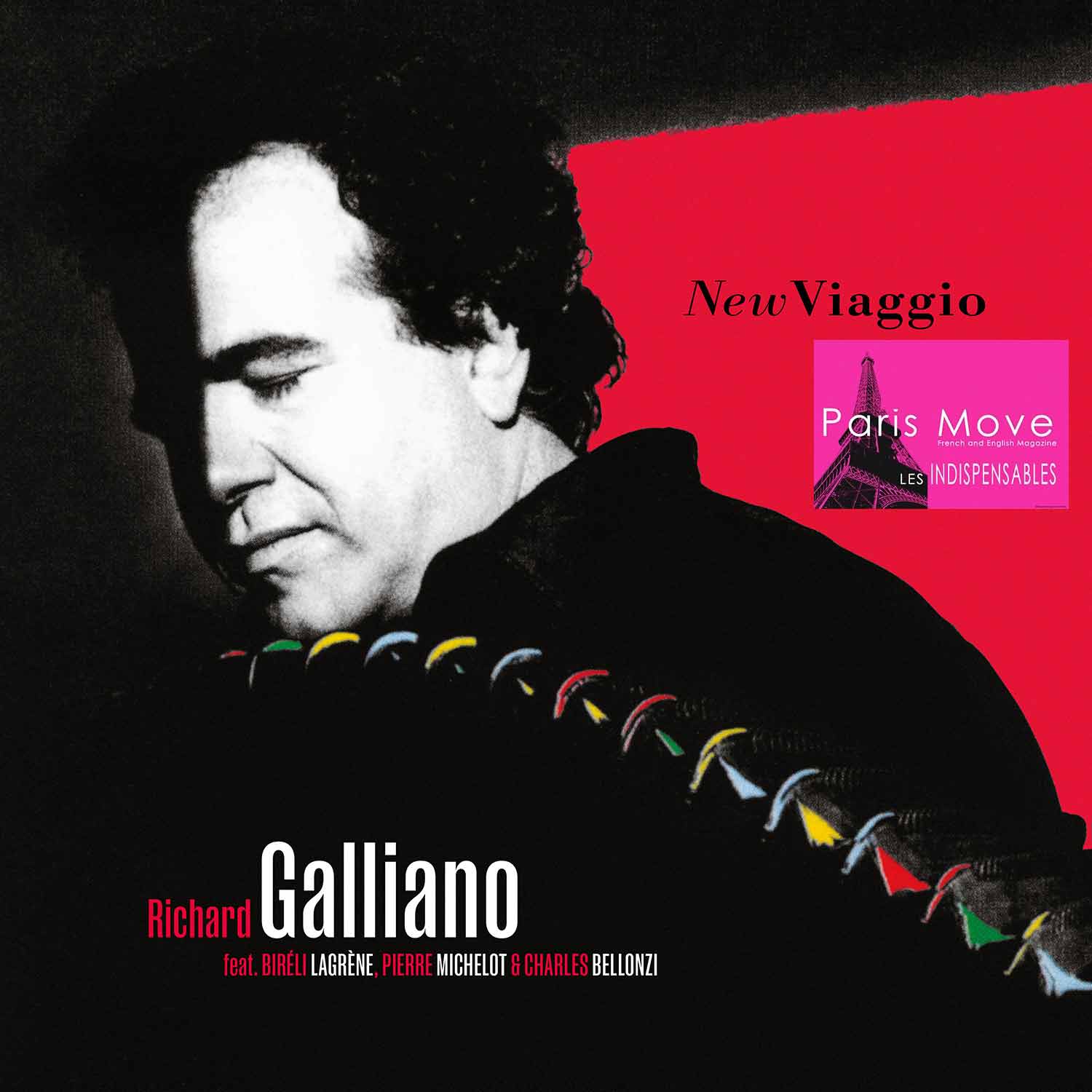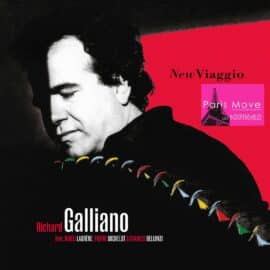| Jazz |

Richard Galliano’s New Viaggio: The Accordionist Who Brought Europe’s Streets Into Jazz’s Grand Hall.
It is always complicated to write about a legend. By the time an artist has earned such a status, their story has usually been told, dissected, and retold again until little seems left to add. To speak of them risks repeating platitudes, or worse, reducing a living, breathing career to clichés. But every so often, an album, especially when rediscovered or reissued, opens a door. It allows us to reconsider an artist’s place in history, to examine what they changed and why it mattered. Richard Galliano’s New Viaggio is such an occasion.
Galliano is the musician who took the accordion, long relegated to the sentimental waltzes of Parisian musette cafés, and carried it, with poise and conviction, into jazz. This was no novelty trick. It was not “accordion jazz” as curiosity. It was the sound of a European instrument, with its own vocabulary, joining the global language of improvisation through the front door. His journey began with Claude Nougaro, the great French singer whose Nougayork album remains internationally recognized. But Galliano did not stop there. Over time, he developed a career that intertwined with jazz itself, while never losing touch with the poetry of the chanson.
Across the decades, Galliano’s accordion has been in conversation with some of the defining voices of both American and European jazz: Chet Baker, Astor Piazzolla, Jan Garbarek, Juliette Gréco, Ron Carter, Michel Petrucciani, Wynton Marsalis. Each name is a milestone in the broader jazz landscape, and Galliano’s presence among them underscores his ability to adapt, to translate, to speak across idioms. Viaggio, first released in 1993, is the distilled product of these encounters.
The sound of a European jazz identity
To place New Viaggio in context, it helps to recall the 1980s and 1990s—a period when European jazz was carving out a distinct voice. For decades, the continent’s players were often cast as disciples of American modernism. But by the late 20th century, a generation of musicians had begun to weave their own traditions into jazz. Think of Jan Garbarek’s ethereal Nordic sound with ECM Records, Tomasz Stańko’s Polish lyricism, or the Mediterranean fusions of Enrico Rava. European jazz no longer sounded like an imitation of New York or Chicago; it was a dialogue with centuries of folk music, classical heritage, and a distinct cultural temperament.
Galliano was part of this flowering. Where Garbarek drew from Nordic landscapes, Galliano drew from the streets of Paris and the voices of chanson. The accordion was not merely an instrument for him, it was a symbol. By giving it legitimacy within jazz, he was asserting that Europe’s own vernacular traditions could stand shoulder to shoulder with bebop, hard bop, or swing.
A landmark recording
The original Viaggio brought together an extraordinary ensemble. Alongside Galliano were guitarist Biréli Lagrène, bassist Pierre Michelot, and drummer Charles Bellonzi. For American readers, Michelot’s name carries particular resonance: he was the bassist on Miles Davis’s haunting soundtrack for Louis Malle’s Elevator to the Gallows. Bellonzi, known as “Lolo,” had been Nougaro’s drummer, admired for his explosive sensitivity. Together, they created a rhythm section of rare elegance.
Hearing New Viaggio today, one is struck by its subtle architecture. The sequencing of tracks feels like a quiet autobiography, touching on Galliano’s chanson roots, his tango encounters with Piazzolla, and his immersion in jazz’s improvisational fire. The music is never showy, never indulgent. Instead, it carries the weight of lived experience, delivered with humility.
And yet, the shadow of Nougaro lingers. For many listeners, Galliano first appeared through those collaborations, and echoes of that partnership drift through the album like memory itself.
A legacy that reshaped an instrument
What is easy to miss today is the cultural shift Galliano set in motion. Before him, few young musicians in Europe would have dreamed of taking up the accordion to play jazz. The instrument was seen as nostalgic, parochial, hardly a ticket to artistic innovation. Galliano changed that.
Today, nearly every accordionist in Europe speaks his name with respect. He is not just a master; he is the figure who made their careers possible. Among the generation that followed, Maxime Perrin and Vincent Peirani are notable examples—players who found their own voices but walked through the door Galliano had opened. From France to Italy to Germany, entire lines of musicians trace their inspiration back to him.
A rediscovery, not just a reissue
This new edition of New Viaggio, released by BMG, is not simply a polished remaster. With Adrien Moignard on guitar and Philippe Aerts on bass, the project gains a new dimension. Their contributions do not overwrite the past; they refract it, allowing the compositions to breathe in a different light.
Galliano himself describes the emotional weight of revisiting the recordings: “In revisiting the recordings from those sessions, I felt a profound emotion, a mix of joy and nostalgia. The presence of Pierre Michelot and Charles Bellonzi, exceptional musicians who have since left us, is still palpable. Pierre, Miles Davis’s bassist on Elevator to the Gallows, and Charles, ‘Lolo,’ Nougaro’s drummer with that explosive sensitivity, formed a rhythm section of rare elegance. And ‘last but not least,’ Biréli Lagrène, a virtuoso guitarist and longtime friend, still with us, added a staggering magic to it all. Thanks to the insight of Rémi Bourcereau, a remarkable sound engineer, we unearthed previously unreleased versions of my compositions. Alternate takes, each distinct, that reflect the creative process—the alchemy that took place in the studio at that time. What we’re offering here is a true work in progress, to be rediscovered anew.”
Nostalgia and poetry
For listeners, the album offers not just music but memory. It is a way to hear Galliano again, at a pivotal point in his career, and to measure the distance he has traveled since. For the artist himself, it is a bittersweet act, an homage to colleagues now gone, a tribute to friendships that still endure, and a reaffirmation of the accordion’s voice in jazz.
Resonances in today’s jazz scene
But Galliano’s influence is not limited to memory. His reissue resonates in today’s jazz landscape, where the boundaries of instrumentation are constantly expanding. Just as Galliano brought the accordion into jazz’s main hall, contemporary artists are introducing instruments once considered “folk” or “peripheral.”
The banjo, through musicians like Béla Fleck, has long crossed into improvisational music. The oud, carried by Anouar Brahem and Rabih Abou-Khalil, has brought Middle Eastern lyricism into the idiom. The kora, in the hands of West African virtuosos like Toumani Diabaté, has entered dialogue with jazz guitar and piano. These instruments, like Galliano’s accordion, bring with them entire histories of place, culture, and memory.
In this sense, New Viaggio feels strikingly contemporary. Galliano anticipated what so much of today’s jazz affirms: that the genre is strongest when it embraces voices once excluded, when it transforms the local into the universal.
The enduring question
So how should we listen to New Viaggio in 2025? Is it a historical document of European jazz’s coming of age? Or is it a fresh statement, reminding us that the accordion—an instrument born of cafés, streets, and folk dances—can speak with the authority of jazz itself?
Perhaps it is both. Galliano’s work invites us to hear continuity where others hear boundaries. In every note, nostalgia and poetry intertwine with improvisation. In every phrase, the streets of Paris converse with the stages of New York.
And in the end, one truth remains: Richard Galliano gave the accordion its passport into the world of jazz. And with New Viaggio, that journey still feels unfinished.
Thierry De Clemensat
Member at Jazz Journalists Association
USA correspondent for Paris-Move and ABS magazine
Editor in chief – Bayou Blue Radio, Bayou Blue News
PARIS-MOVE, September 15th 2025
Follow PARIS-MOVE on X
::::::::::::::::::::::::
Musiciens sur les titres de l’album original:
Richard Galliano : accordéon
Biréli Lagrène : guitare
Pierre Michelot : contrebasse
Charles Bellonzi : batterie
Musiciens sur les bonus de la version 2025:
Richard Galliano : accordéon
Adrien Moignard : guitare
Philippe Aerts : contrebasse
Track Listing:
Waltz for Nicky
Java Indigo
Viaggio
Billie
Tango Pour Claude
Christopher’s Bossa
Coloriage
Romance
Little muse
La Liberté Est Une Fleur
For Lolo
Coloriage Alternate
Java Indigo Alternate
Little Muse Alternate
Waltz for Nicky Alternate

